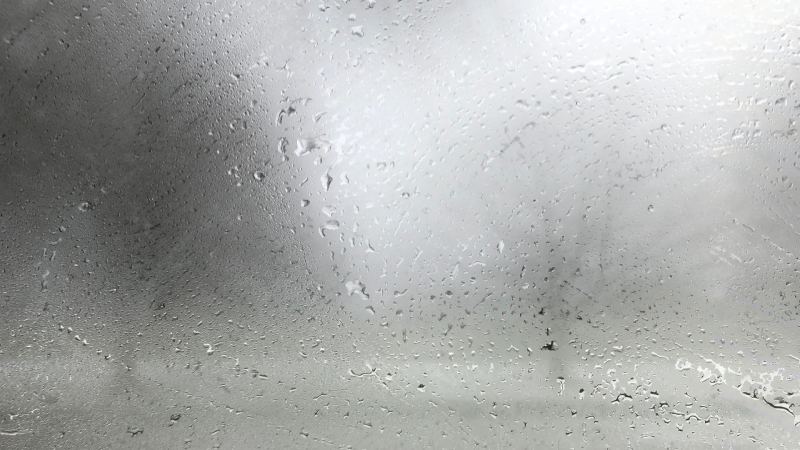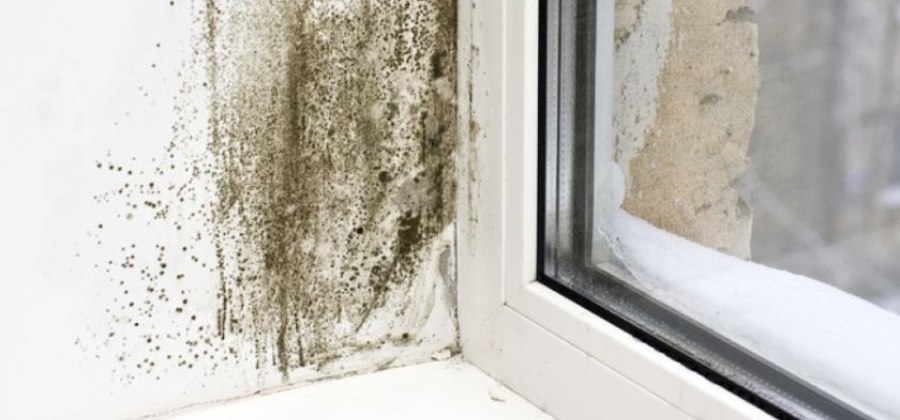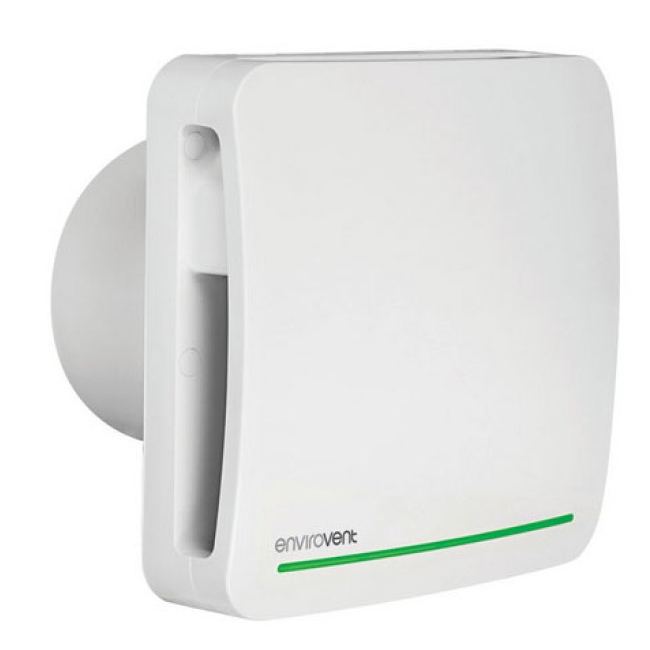When it comes to making sure that your home is as optimised for warmth, energy efficiency, cleanliness, and health as best as possible, excess moisture is the enemy number one! The combination of warmth and moisture provides an ideal breeding ground for mould and rot, creating problems not just aesthetically, but structurally, in the long term. Mould also carries certain health implications for people who are vulnerable, typically the elderly, young and asthmatic. With mould caused by condensation, it’s worth paying attention to the moisture building up in your home.
It's not all doom and gloom, however! There’s plenty to be done to begin dealing with moisture, condensation and mould problems in your home. From ventilation extractor fans to spider plants, there are plenty of options to consider to remedy the situation.
The key thing is to understand the origins of the problems, fix the symptoms and then start working towards dealing with the core issues.
Some moisture is inevitable in the home, but when it’s allowed to run rampant, it can become a major issue, resulting in costly repairs and generally being tricky to deal with. Here’s how to start dealing with mould and condensation problems in your home.
What are Condensation and Mould?
Condensation and mould come from the same core problem, excess moisture. Condensation happens when warm, moist air hits a cold surface such as a window. Mould is caused by condensation, and flourishes in any environment that is both moist and warm, making a well-heated home with condensation and moisture problems an ideal breeding ground, although condensation mould in the bathroom is often the worst spot. The trouble is, we really like our homes warm and sheltered, with no cold wind blowing through, but sadly mould also prefers that exact environment.
As we move into the cooler months, especially with energy prices on the rise, no one wants to be leaving windows open or running the expensive tumble dryer.
While air drying clothes and keeping windows shut will help save energy costs and keep warmth in, it’ll also keep moisture trapped inside. This excess moisture can lead to the growth of mould throughout the home, which can be problematic and expensive to deal with.
Moisture is an inevitable part of an inhabited home, whether it’s from cooking, showering, drying clothes, ironing, or even just breathing, many aspects of life massively contribute to the overall moisture in a home environment.
If you are keeping all those windows shut tight and not implementing any other solutions for your excess moisture, you could end up with some real problems, which is why you need to start dealing with condensation and mould problems in your home.
Why is Moisture Such a Problem Indoors?

First and foremost, among the risks associated with excessive moisture indoors is mould, specifically black mould. Not only is this costly and troublesome to deal with, but it also presents health risks, particularly for the young or elderly.
The spores released by mould may cause breathing difficulties and other health issues. Commonly affected are asthmatics and people with breathing conditions. There are multiple types of mould, with some types being more toxic than others, so it’s always worth staying on top of.
Often associated with unsightly black marks on the walls, mould can also lurk behind furniture and within walls, making it harder to identify and therefore deal with.
We all know that maintaining a property requires periodic decorating and repainting, however, if you have a moisture problem, you’re going to find yourself redecorating far more often than you should.
This is especially an issue in plasterboard, causing ugly sagging and swelling, as well as stains and peeling wallpaper that can make a room look dirty and unkempt. Once moisture starts causing problems on this scale, getting everything fixed and replaced can become extremely expensive, so pay attention to the early warning signs.
The damage isn’t just limited to the aesthetic, however, as moisture within your walls can easily result in long-term problems to the structural elements of your property, affecting external walls, causing the timber to swell, rot and loosen nails, as well as cladding issues.
All this can prove expensive to fix and rectify, requiring specialists, especially when it comes to deeper mould issues within your walls.
Lastly, there’s the energy cost of excessive moisture in the home. For many, with energy costs skyrocketing, this is going to be a major concern.
With many homes utilising insulation within the walls to ensure thermal retention and minimise heating costs, the thermal properties of the insulating material can be compromised when it gets wet, making the property much more costly to keep warm.
How To Identify Mould and Condensation Problems
The easiest way to identify moisture problems within the home is always going to be a humidity detector, allowing you to know exactly how humid and moist your home is, but there are plenty of other signs to look out for too.
Excessive condensation on your windows when you wake up in the morning is one of the clearest signs that you’ve got moisture issues in your home.
As moisture builds up in the home, caused by simple things like showering, ironing and even breathing, that warm, moist air hits the cold glass of your windows and turns to water droplets.
Having a lot of condensation on your windows in the morning is a clear sign the environment in your home is too moist. The worst room is often going to be the bathroom with condensation mould in bathrooms being the most common.
Discolouration, stains, and peeling wallpaper can also be a clear sign of condensation and mould problems, as the moisture settles into your walls it can cause plenty of issues.
Big, stained patches, bulging or sagging areas, peeling wallpaper, and patches of mould, which can resemble black spots, are all signs of excess moisture in the home, meaning you’ve got to start dealing with condensation and mould problems in your home as soon as possible.
Fortunately, we have some solutions for you.
Aside from the everyday life causes, there are several key sources that are worth being aware of, even if they are an inevitable aspect of living in a moist, temperate country.
These are mostly unavoidable, but understanding the potential sources is vital for dealing with the effects of moisture in the home.
- Leaky roofs and walls, ineffective guttering and badly fitted windows and doors all let moisture into the home.
- Groundwater can rise up through the walls and floor if the damp proofing underneath isn’t doing its job.
- Leaky plumbing, steamy appliances, and badly sealed showers and baths all release moisture, but worse, they can release the moisture into places you can’t see, such as within your walls.
What Can You Be Doing Differently?
While it’s next to impossible to completely deal with mould and moisture within the home, there are plenty of things you can be doing to help avoid the problems associated with moisture worsening.
These can be as simple as drying your clothes outside instead (if the weather permits!).
- Try to keep a consistent temperature indoors – spending a little more on heating could help you avoid moisture and dampness issues
- Don’t dry clothes inside – if you must, make sure there’s an open window nearby or a ventilation fan
- Make sure to keep your extraction units on while cooking and showering. It can be worthwhile having them set to come on at intervals or timed to the light switches
- Have shorter, cooler showers as condensation mould in bathrooms is common
- Never dry clothes over a radiator
- Make sure your tumble dryer is properly vented
- Periodically air out spaces within the home
- Keep all your furniture pulled away from the walls
- Put a lid on your pans while cooking
- Wipe down moist surfaces, including windowsills in the morning, getting rid of condensation
- Invest in a dehumidifier
If you’ve got a cold, damp room within your home, that’s going to be an ideal candidate location for your dehumidifier. Moisture spreads from room to room, so making sure your biggest problem area is covered with a dependable dehumidifier will help dealing with condensation and mould problems in your home.
Another effective approach can be investing in better extractor fans throughout your home. Typically, most homes will have an extractor above the oven and another in the shower or bathroom.
This can be good enough, but if you’ve got a real moisture problem, it can be worthwhile making sure your extractor fans are up to snuff, and if not, look at upgrading to better models.
Another option would be installing extractor fans in problem rooms in the home, notably the bathroom, kitchen or utility room.
Dealing with Existing Condensation and Mould Problems in Your Home
Making sure to keep on top of moisture, monitoring with a humidity meter, turning on extractor fans, wiping up condensation, regularly airing out and cleaning up any mould is going to go a long way toward dealing with any issues.
Cleaning up surface mould can be as simple as using a strong surface cleaner, or a steam cleaner, and making sure the space dries out completely.
If want to avoid using any strong chemicals, white vinegar can also be effective for dealing with surface mould spots.
As far as the spores are concerned, air purifiers can be helpful, and interestingly, NASA published a list of houseplants that can help process spores out of the air, including spider plants. However, it’s worth noting that houseplants can increase moisture as well.





